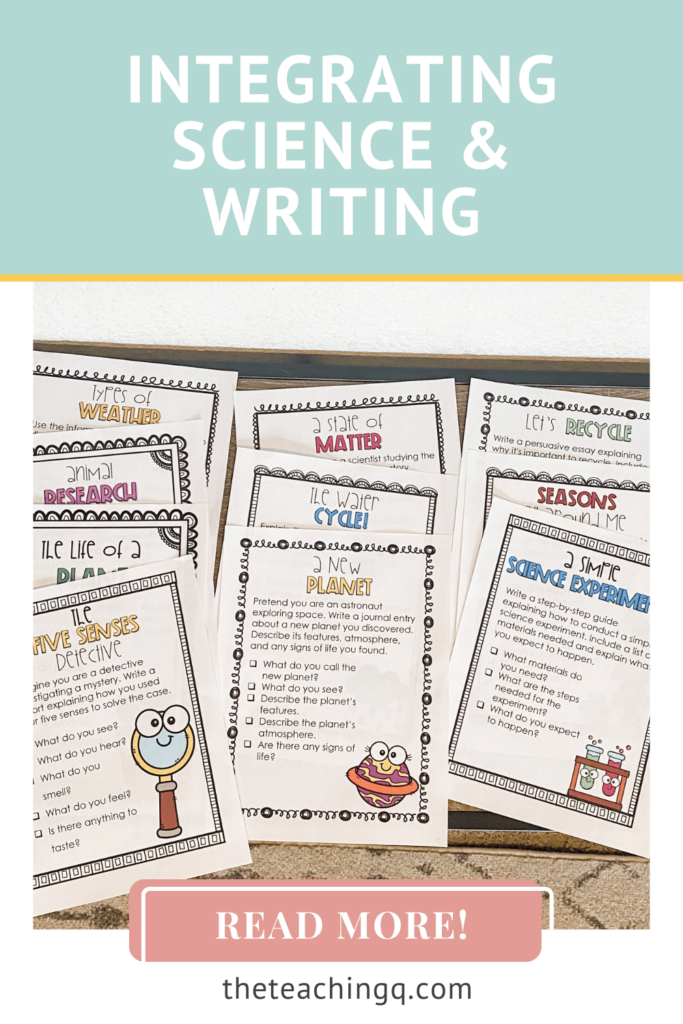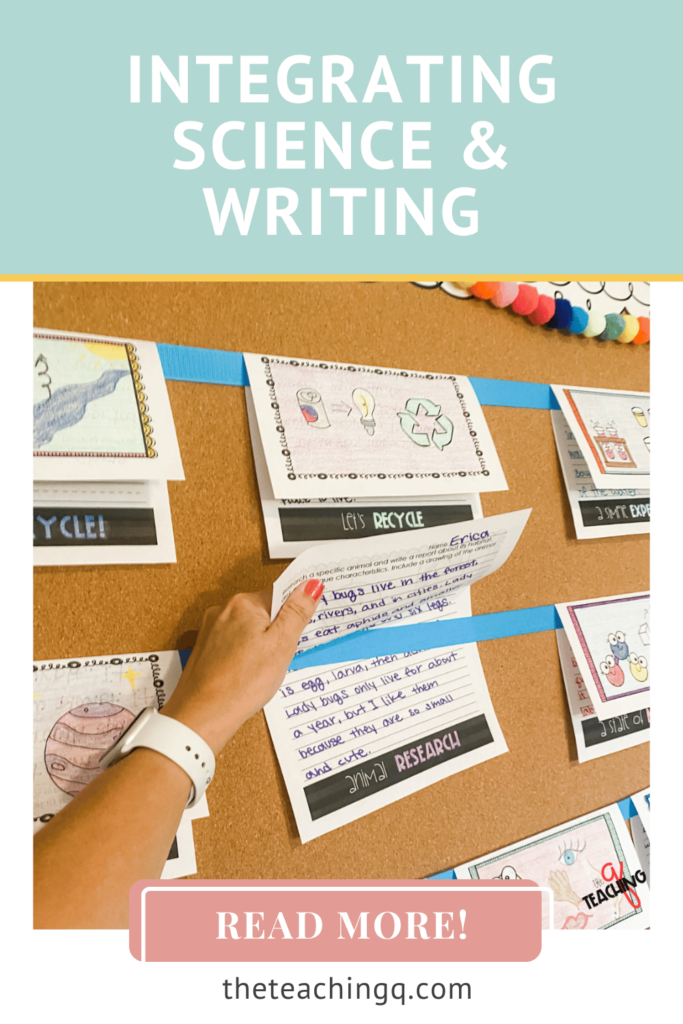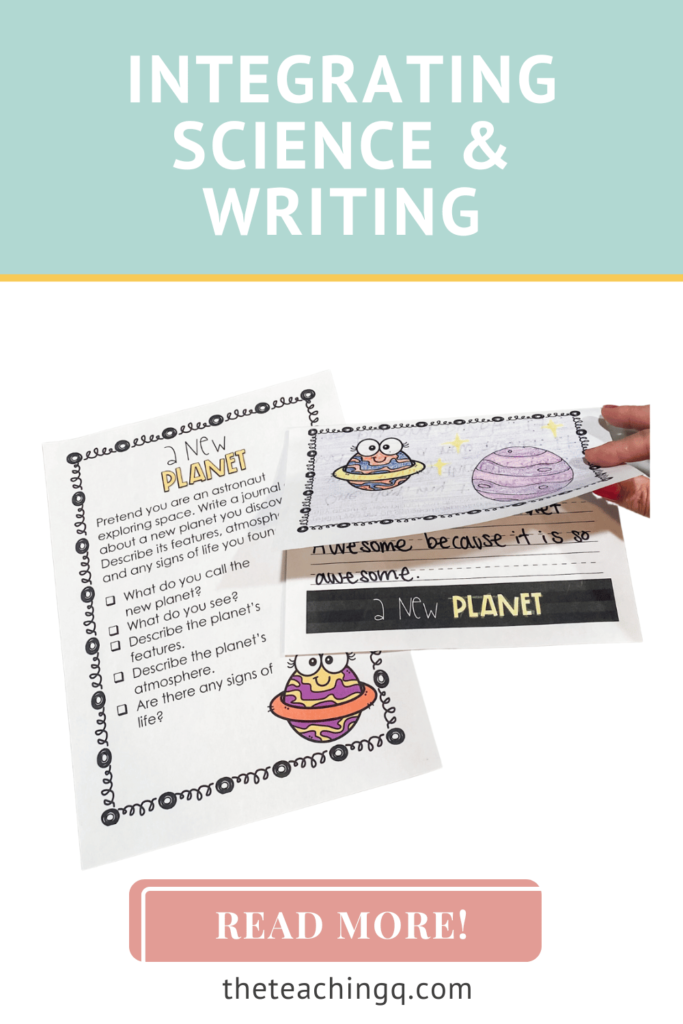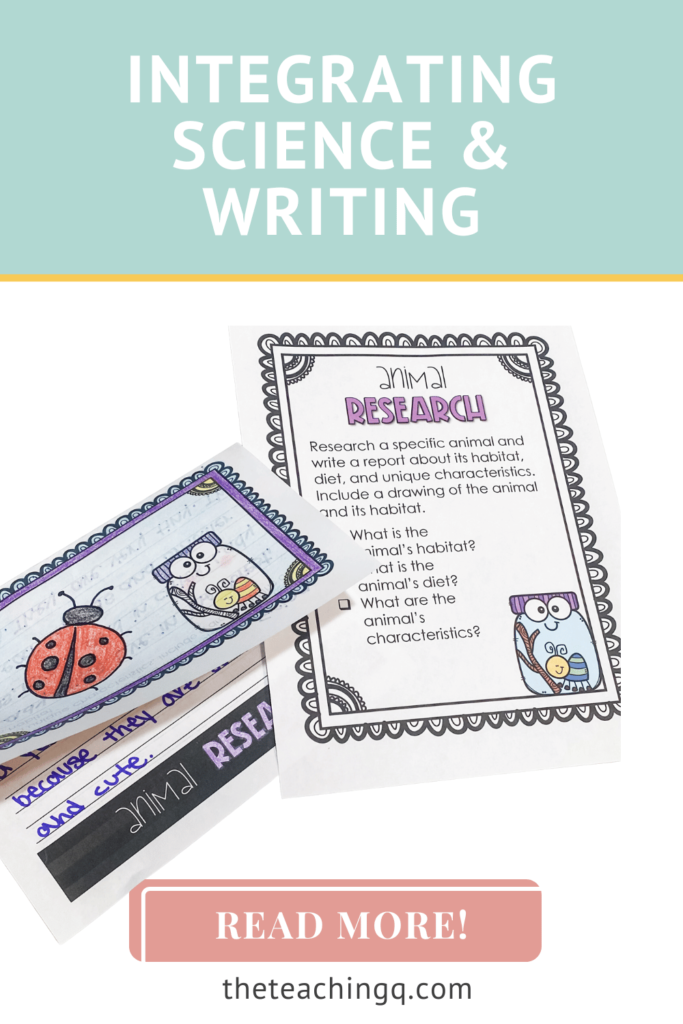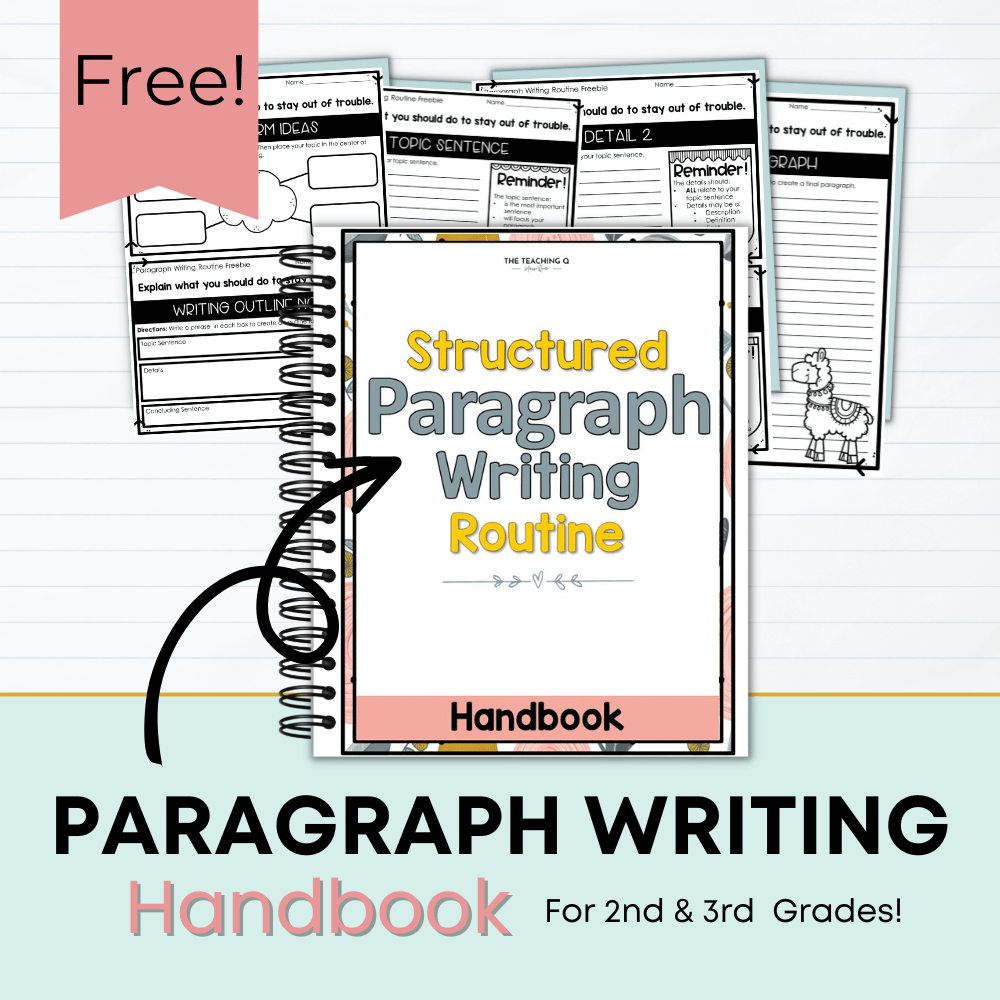How often are you integrating science and writing within your lessons?
If you’re anything like me, I set out with the best of intentions, but before long, the constant pressures and daily demands derail me. Well, that is, until I designed a system to integrate science and writing efficiently and effectively with ease.
In fact, the system works so well that my students won’t allow me to get derailed. Yup, they love the writing so much that they will call me out on it if I breeze through without the writing.
I know. It’s hard to believe, but true.
In today’s educational landscape, it is crucial to find creative ways to enhance learning experiences and promote cross-curricular integration. One powerful approach combines science and writing, allowing students to explore scientific concepts while honing their communication skills. By incorporating the No-Prep Second Grade Science Writing Prompts into your lessons, you can effortlessly integrate science and writing, providing a comprehensive and engaging learning experience for your students.

Why Integrate Science and Writing?
Integrating science and writing offers numerous benefits to both students and educators. By combining these two disciplines, students can deepen their understanding of scientific concepts while developing essential writing skills. Here are a few key reasons why integrating science and writing is so important:
- Reinforces Learning: Writing about science topics requires students to articulate their understanding, reinforcing the knowledge they have acquired in class. It encourages them to think critically, make connections, and synthesize information.
- Promotes Communication Skills: Writing allows students to express their ideas, thoughts, and observations clearly and coherently. This skill is crucial not only for academic success but also for future professional endeavors.
- Encourages Reflection: Writing provides a platform for students to reflect on their scientific experiments, observations, and discoveries. It fosters metacognition and helps students develop a deeper understanding of their own learning process.
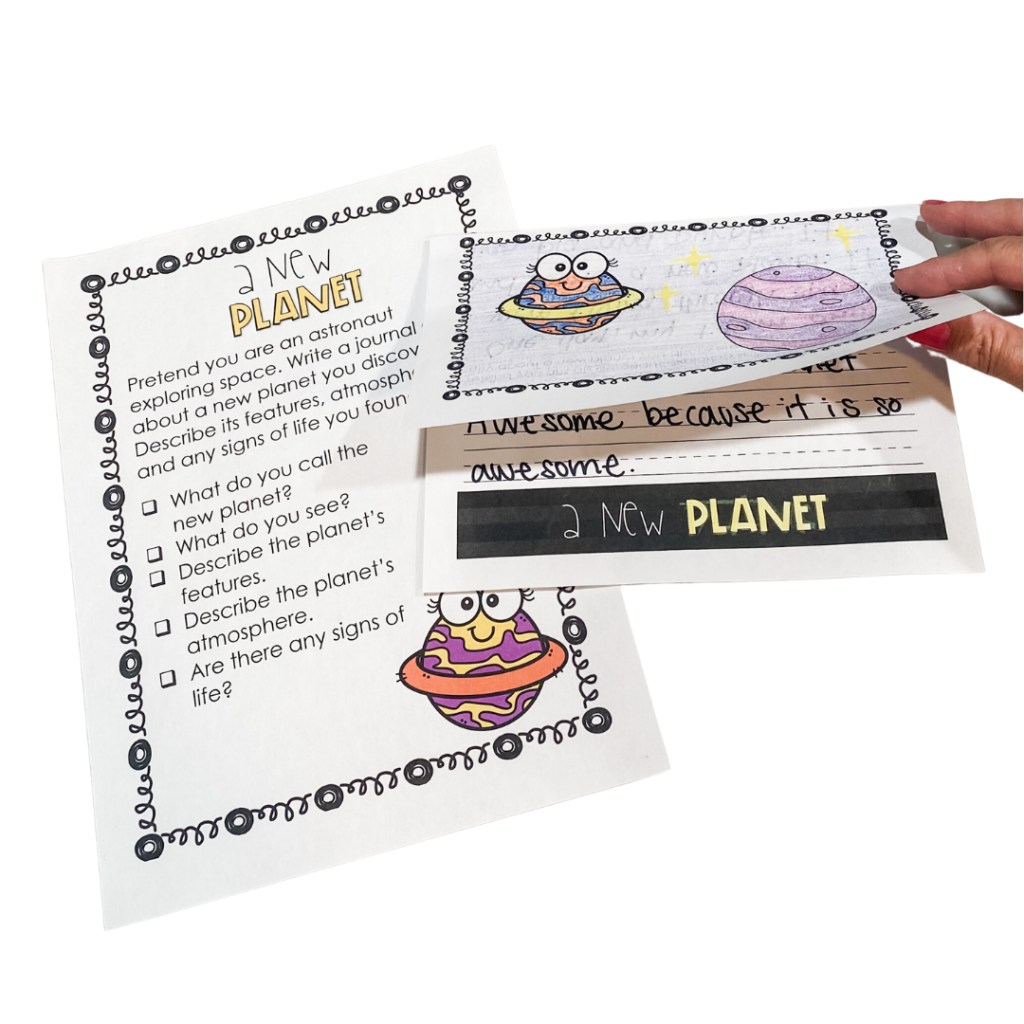
Integrating Science and Writing with the No-Prep Second-Grade Science Writing Prompts:
The No-Prep Second Grade Science Writing Prompts resource seamlessly integrates science and writing into your classroom.
Here’s how you can use this resource to extend your science lessons:
1. Choose Relevant Prompts: Select writing prompts that align with the science concepts you are teaching. These prompts are designed specifically for second-grade students and cover a wide range of scientific topics.
2. Introduce the Prompt: Present the writing prompt to your students, providing context and explaining how it relates to the science lesson. Encourage them to think critically and creatively as they respond to the prompt.
3. Conduct Research and Investigations: As students brainstorm ideas for their writing, guide them to conduct research or carry out experiments to gather information and evidence to support their claims. This hands-on approach fosters a deeper understanding of scientific concepts.
4. Scaffold the Writing Process: Support students throughout the writing process by providing graphic organizers, sentence starters, and peer feedback. Encourage them to use scientific vocabulary and structure their writing with an introduction, supporting details, and a conclusion. Read this blog post to learn more about scaffolding the writing process.
5. Share and Celebrate: Once the writing is complete, use the foldable and hang feature of the No-Prep Second Grade Science Writing Prompts to create an interactive bulletin board. Allow students to proudly display their work, facilitating a class-wide celebration of their scientific accomplishments.
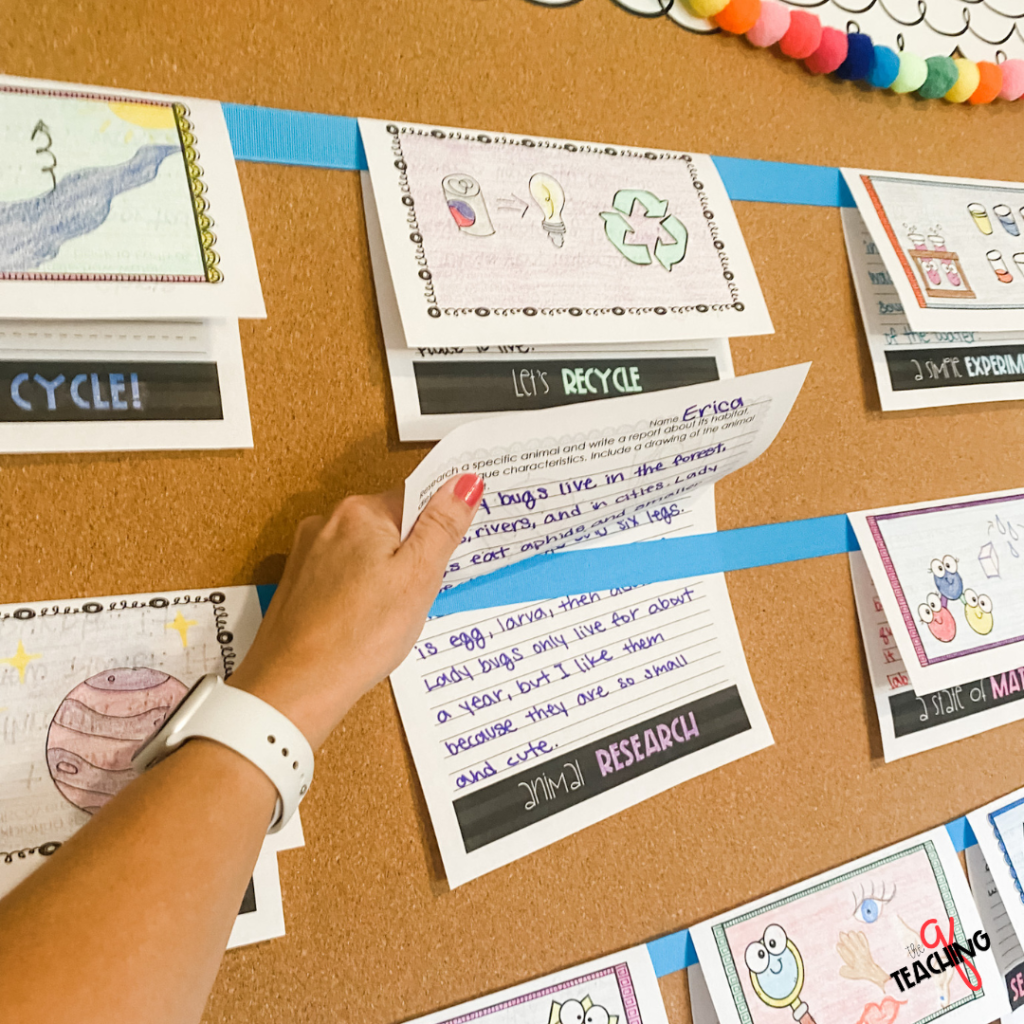
Benefits of Integrating Science and Writing:
The integration of science and writing using the No-Prep Second Grade Science Writing Prompts offers several advantages:
- Enhanced Engagement: By connecting science with writing, students become active participants in their learning journey. They are motivated to investigate scientific concepts in-depth and express their ideas through writing.
- Strengthened Comprehension: Writing about science requires students to internalize their understanding, facilitating a deeper comprehension of scientific principles and processes.
- Improved Communication Skills: Integrating writing into science lessons hones students’ ability to communicate complex ideas effectively, both in written and oral forms.
- Increased Critical Thinking: Writing prompts encourage students to analyze scientific information, think critically, and support their ideas with evidence and reasoning.
- Real-World Relevance: Integrating science and writing helps students understand the importance of scientific literacy in everyday life. It allows them to see the practical applications of science while developing essential communication skills for future endeavors.
Final Words:
Integrating science and writing is a powerful approach to extending your science lessons and creating a holistic learning experience for second-grade students. By utilizing the No-Prep Second Grade Science Writing Prompts resource, you can seamlessly combine these two disciplines, fostering engagement, deepening understanding, and nurturing essential communication skills. Embrace the potential of science and writing integration, and watch your students thrive in their scientific explorations while becoming confident and effective communicators.
To easily integrate science and writing with your students, you can get the Second-Grade Science Writing No-Prep Worksheets here.
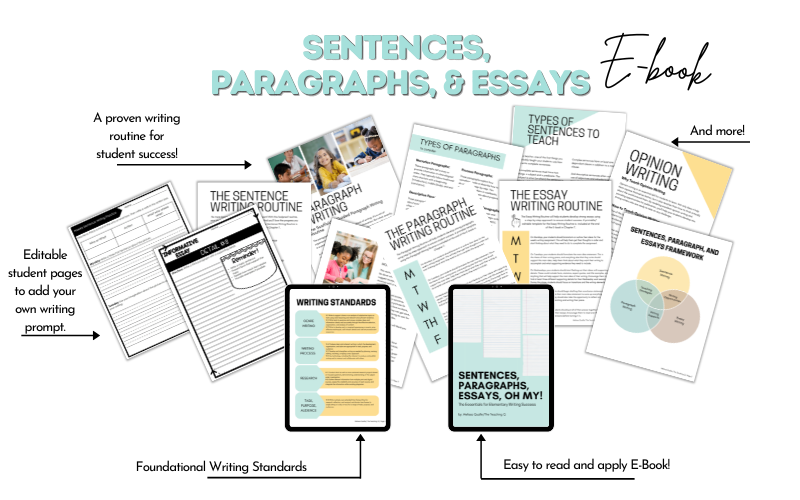
If you’re looking for more ideas on creating a writing routine that works for your elementary-aged students, be sure to check out my Sentences, Paragraphs, and Essays: Oh, my! E-book. You’ll love the tips, tricks, and activities to excite your students about writing!
-Melissa



